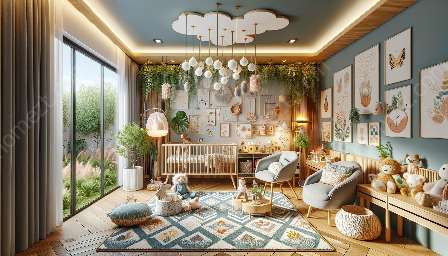Growth charts are an essential tool for monitoring the physical development of children. They not only track a child’s growth, but also serve as a decorative element in nurseries and playrooms, adding a personalized touch to the space. In this comprehensive guide, we will explore the importance of growth charts and provide practical tips on creating an attractive and educational growth chart that complements your nursery or playroom decor.
Importance of Growth Charts
Growth charts are standardized tools used by healthcare professionals to monitor a child’s growth and development over time. These charts provide valuable information about a child’s height, weight, and head circumference, and help identify any potential growth-related concerns or health issues.
By regularly measuring a child’s growth and plotting the data on a growth chart, parents and healthcare providers can track the child’s progress and identify any deviations from expected growth patterns. This early detection allows for timely interventions to address potential problems, ensuring the child’s healthy development.
Creating an Attractive Growth Chart
While growth charts are primarily functional, they can also be transformed into decorative pieces that add character to a nursery or playroom. Here are some tips for creating an attractive and visually appealing growth chart:
- Choose a Theme: Select a theme that complements the existing decor of the nursery or playroom. Whether it's woodland creatures, dinosaurs, or celestial motifs, incorporating a theme adds a playful and personalized touch to the growth chart.
- Select Materials: Opt for materials that are safe, durable, and easy to clean. Consider using a high-quality canvas, wood, or removable wall decals for the growth chart, ensuring that the materials are child-friendly and long-lasting.
- Personalize It: Add the child’s name, birthdate, and meaningful milestones to the growth chart to make it more personalized. This not only serves as a sentimental keepsake but also adds a unique decorative element to the space.
- Interactive Elements: Integrate interactive features such as movable markers, stickers, or pockets to store photos and notes. This encourages child engagement and makes the growth chart interactive and educational.
Placement and Display
Once you have created an attractive and personalized growth chart, it’s important to consider the placement and display within the nursery or playroom:
- Visibility: Place the growth chart at a height that is easily accessible and visible to both children and adults. Ensure that it is securely fastened to the wall to prevent any mishaps.
- Interactive Setting: Position the growth chart in a designated area that encourages interaction, such as a reading nook or play corner. This creates a conducive environment for monitoring and celebrating the child’s growth milestones.
Conclusion
Growth charts are not only valuable tools for monitoring a child’s physical development, but also serve as decorative elements that add personality and charm to nurseries and playrooms. By understanding the importance of growth charts and implementing creative ideas for their design and display, parents can create an attractive and engaging addition to their child’s living space.
By following the tips provided in this guide, you can design a growth chart that not only tracks your child’s growth but also complements the decor of your nursery or playroom, adding a touch of whimsy and sentimentality to the space.



